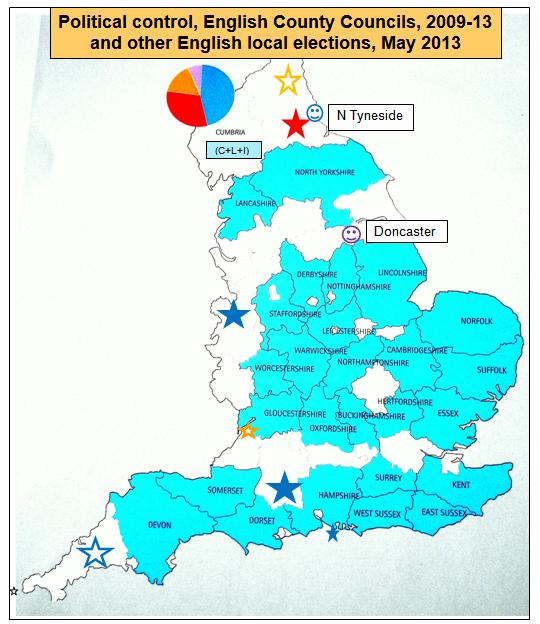Ian Briggs
The world of social science can be an odd place at times. Much is quite rightly being made of the impact of severe reductions in public spending, but when social scientists look at the levels of satisfaction with public services, many see the general quality of services remaining high.
This seeming anomaly can seem even more confusing when we start to look at the tactical moves made by public institutions and bodies to place themselves within a market-based approach to service provision. For those in the private sector demand stimulation is a core activity. Seeking growth, market penetration and improving competitiveness are very much at the heart of sound management and leadership. But for the public sector the issue of demand brings with it issues of access criteria, rationing and strategies o deflect demand away from the most pressurised services.
The rise of strategic commissioning has been for many the key mechanism to deal with market-based approaches to service provision – this brings with it tactics that seek to make public services more attractive to market-based provision, stimulating provision rather than stimulating demand. Indeed, there are growing numbers of examples where through taking a market-based approach to provision, citizens are readily accepting that services are commissioned by public bodies but actually provided by private and third sector organisations.
Consequently, if satisfaction and contentment remain high (though it has to be accepted that is not in any way universal), why should we worry?
Having happy and content consumers for a commercial organisation is indeed something to be very highly valued and the same should be true for our public services. However, there is a sting in the tail. There are an increasing number of examples of what we can refer to as ‘needs acceleration’ – if you satisfy a demand for a good or a service then over time it brings with it an appetite for yet more. This is a phenomena that is well understood in many consumer markets; once you have provided a good product the time will come when it needs replacing and the consumer expectation is that it will bring with it an advancement in quality and increased utility.
For local councillors, the expenditure of monies on local improvements can bring with it both satisfaction and a feeling that if an improvement is made in one area then another must be close behind. This is ‘needs acceleration’ – if you can make one thing better then why can you not deal with another perceived problem? For many in local communities the history of planning gain through section 106 agreements often leads to a paradox – this is now being keenly felt with severe budget reductions.
An example of this is where developers have brought improved local facilities such as play areas with housing developments, over time the asset investment cost is overtaken by revenue costs to keep the facilities in good order. Over ten years a play area that cost £60k to build and install can bring with it equal levels of cost to ensure that it is maintained and operated to an acceptable standard. This impact of ongoing revenue costs over capital costs is an issue that is at times challenging to get across to communities who seek improvements in civic amenities but remain unaware of the longer term implications of meeting revenue expenditure obligations.
The same can be said for where we have schools that are judged to be of high calibre. This brings with it the perceived advantage of higher property values and greater pressure for development. A local school with strong OFSTEAD reports is attractive for a developer seeking to build new properties on adjacent land. For the developer the housing mix is determined by national regulation though it is clearly in the interests of the developer to build houses that are saleable and attractive to potential customers who seek to have a place in a good school for their children. Given that any new development brings with it obligations under section 106 or the CIL, the local community has the right to expect that local facilities and infrastructure improvements will follow – though, again, the actual benefit may be relatively short term. Although the open spaces and free public access facilities that come with new housing development are to be welcome and indeed seen as a necessity, over time the costs of maintaining such improvements will have to be met from somewhere. This cost can and does often fall on the local community, increasing pressure on expenditure in future years, at a level that can be difficult to calculate.
This, however, cannot be an argument for mediocrity. We need development; any community that does not seek to improve is failing in its civic duty – though we may be facing too many problems in years to come by taking a short term view of civic performance. For many councillors, the pressure to create physical improvements to a place is huge; though if we concentrate too much on the immediate future at the expense of the longer term we can see that some of our public services will fall into neglect, especially as the cost of maintaining those services and facilities increases over time.
A question that often arises in our teaching and research on the issue of strategic commissioning is what it is exactly that make strategic commissioning strategic. The answer may lie in the balancing of meeting immediate need with longer term vision – too often commissioners are faced with commissioning for the here and now and fail to see that we have to make all provision sustainable; poor short term commissioning may meet immediate needs but fail to take into account where service need will be in years to come. Most councils are willing to admit that they struggle with the very idea of having a commissioning strategic – they can see the need for it but commissioning for future needs is something that can be driven out as today’s agenda is about meeting known needs today.
Commercial organisations have at their fingertips different strategies that are perhaps unavailable to us – they can offer differentiated products and services where premium products and services can be delivered alongside standard ones. The premium charges cover the cost of research and development and the cost of the premium in the first place.
What remains is that whilst there may be growing evidence that some people are generally satisfied with what is provided in a period of austerity and service diminution, the actual demand for services does not actually decrease. We offer an increasing number of potential substitutes and alternatives, but where we make improvements or update facilities and services within the mind of the public it can and does bring an expectation of more.
Ian Briggs is a Senior Fellow at the Institute of Local Government Studies. He has research interests in the development and assessment of leadership, performance coaching, organisational development and change, and the establishment of shared service provision.






